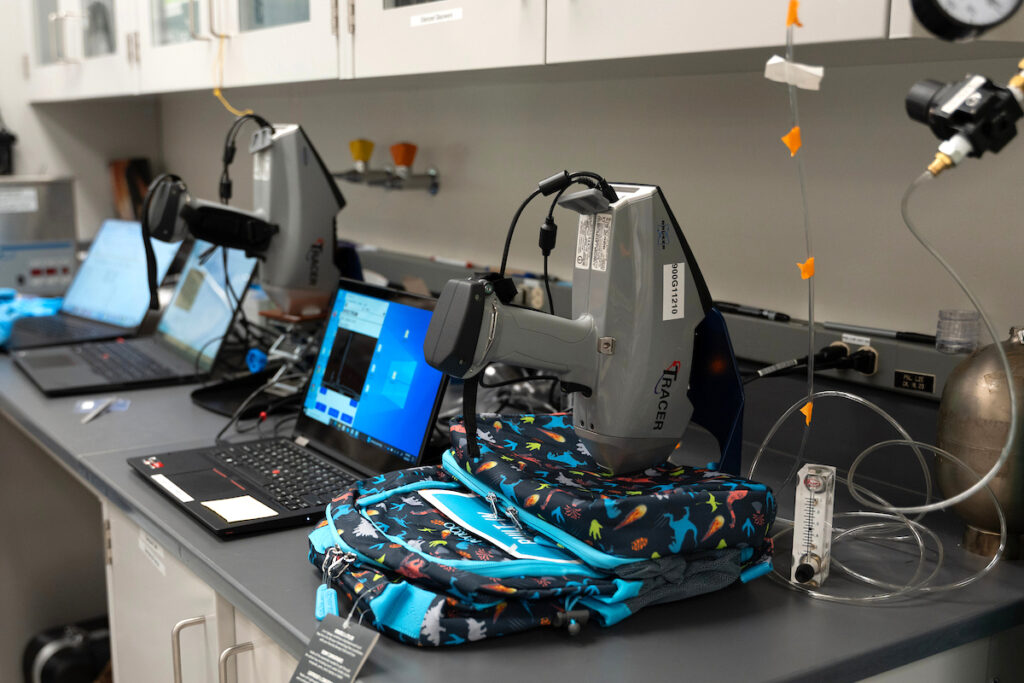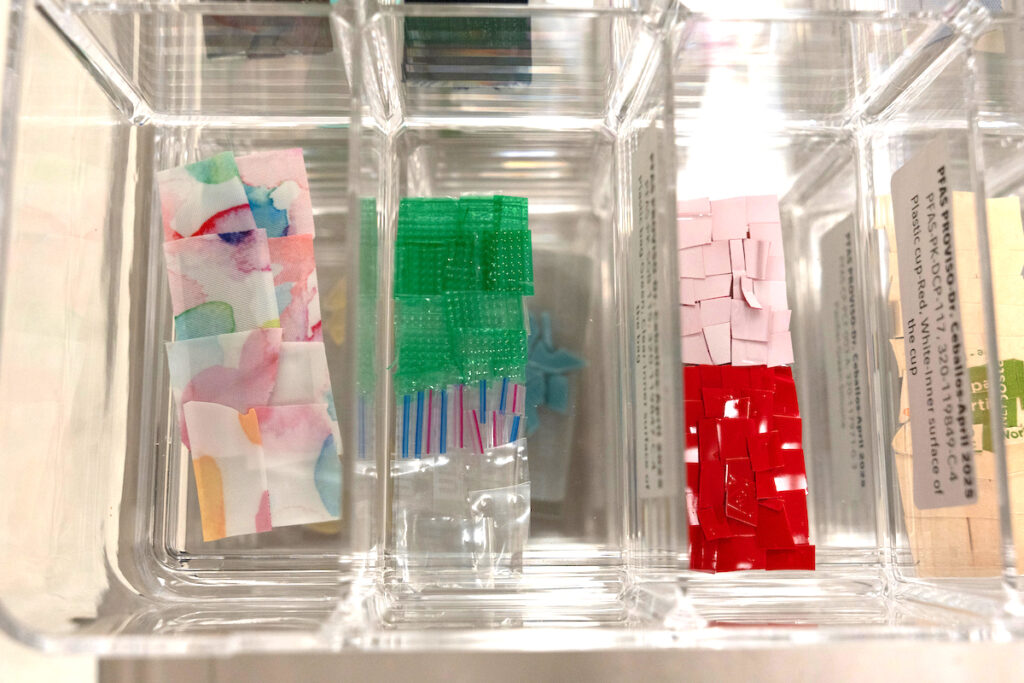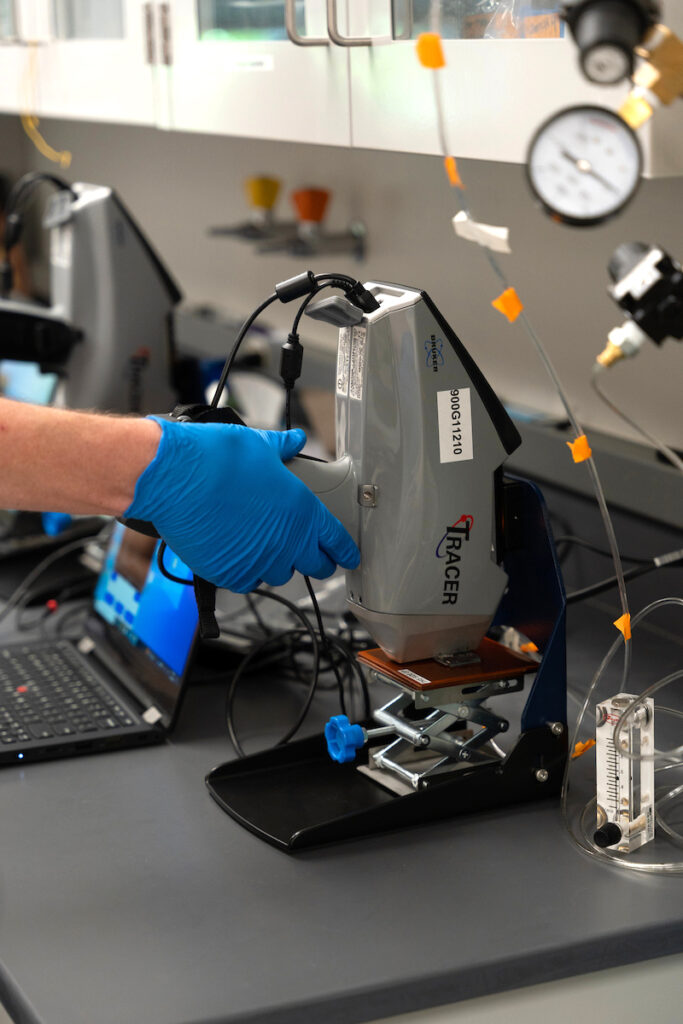By Nina Huang
NORTHWEST ASIAN WEEKLY

The Hazardous Waste Management Program, in partnership with the University of Washington, Public Health – Seattle & King County, and Purdue University, is taking bold steps to better understand PFAS exposure in our homes and communities. This first-of-its-kind pilot project, led by UW researchers, explores how portable tools—and community input—can help identify toxic “forever chemicals” in the products we use every day.
A first-of-its-kind pilot initiative by King County’s Hazardous Waste Management Program is bringing cutting-edge chemical testing into neighborhoods to detect toxic “forever chemicals” in everyday products—from cookware to cosmetics.
What are PFAS and why they matter
The project focuses on PFAS (per- and polyfluoroalkyl substances), a large class of man-made chemicals used to make items nonstick, waterproof, and stain-resistant. PFAS can be found in frying pans, waterproof jackets, food packaging, and even makeup.
While PFAS’s durable properties make them useful, they’re also what make them dangerous. These chemicals don’t easily break down in the environment or the human body—earning them the name “forever chemicals.” Research links PFAS exposure to cancer, hormone disruption, reproductive issues, high cholesterol, and weakened immune response, including reduced vaccine effectiveness in children.
“We know these chemicals are everywhere,” said Shirlee Tan, senior toxicologist at Public Health – Seattle & King County. “But we also know there are safer choices. The challenge is that companies don’t have to disclose PFAS use, so you can’t just pick up a raincoat or pan and know if it’s been treated.”
From lab to community

The Hazardous Waste Management Program, in partnership with the University of Washington, Public Health – Seattle & King County, and Purdue University, is taking bold steps to better understand PFAS exposure in our homes and communities. This first-of-its-kind pilot project, led by UW researchers, explores how portable tools—and community input—can help identify toxic “forever chemicals” in the products we use every day.
Traditionally, PFAS testing required costly, time-intensive lab work that destroyed the product being analyzed. The King County pilot project explored a new option: a portable handheld X-ray fluorescence device that screens for fluorine, a key marker of PFAS, without damaging the item.
“Normally, we’d have to grind a sample and send it to a lab,” Tan explained. “This tool lets us look for PFAS quickly, out in the community, and without destroying the item. That’s a huge difference.”
The project, developed in partnership with University of Washington researcher Dr. Diana Ceballos, was shaped by community feedback. Through multilingual surveys, residents were asked which products they most wanted to be tested—top answers included children’s goods, cosmetics, household items, clothing, and food packaging.
“We wanted the study to reflect people’s real concerns,” said Tan. “That way, the results are not just about the science, but about answering questions that matter to our communities.”
Researchers ultimately tested around 100 products. The handheld tool reliably detected high fluorine levels in nonstick pans, waterproof jackets, food packaging, and certain cosmetics such as eyeshadow and foundation. While it still needs refinement to catch lower levels, the findings show strong potential for community use at health fairs, neighborhood events, or even in-home visits.
The scientist behind the research
For Tan, this work is both professional and deeply personal. The daughter of a Chinese father who emigrated from the Philippines and a German American mother, she grew up in New Mexico hiking and camping—an upbringing that sparked her lifelong love of biology and the natural world.
Her academic journey took her from marine biology to neurobiology, where she began studying how pesticides could contribute to Parkinson’s disease. Later, she worked with the U.S. Environmental Protection Agency, the National Zoo, and the Organization for Economic Cooperation and Development in France before joining King County in 2016.
But a turning point came when she started thinking about having children.
“When I was starting to work in the field of endocrine disruptors, I was learning about how chemicals affect hormone health,” Tan said. “At the time, there were a lot of studies on flame retardants, especially PBDEs. The European Union had already banned many of them, but in the U.S., they were still common in upholstery, carpets, and clothing. When I became pregnant, data showed that women here had much higher levels of these chemicals—and there was nothing I could do to prevent my child from being exposed. That was disheartening. It made me realize how much upstream regulation impacts people’s daily lives. That moment still drives my passion for what I do.”
That experience deepened her commitment to advancing environmental health policy and community awareness—especially among populations disproportionately affected by toxic exposures.
Reducing exposure
While research continues, Tan emphasizes simple steps people can take to reduce PFAS exposure now:
- Cookware: Use stainless steel, carbon steel, or cast iron instead of nonstick pans.
- Food storage: Use glass instead of plastic, and avoid reheating food in coated takeout containers.
- Clothing and furniture: Skip items labeled “stain-resistant,” “wrinkle-free,” or “waterproof” unless necessary.
- Consumer goods: Look for third-party certifications such as the EPA’s Safer Choice label, or packaging that says “fluorine-free” or “PFAS-free.”
A shared responsibility

The Hazardous Waste Management Program, in partnership with the University of Washington, Public Health – Seattle & King County, and Purdue University, is taking bold steps to better understand PFAS exposure in our homes and communities. This first-of-its-kind pilot project, led by UW researchers, explores how portable tools—and community input—can help identify toxic “forever chemicals” in the products we use every day.
Washington has led nationally in regulating PFAS, phasing them out of firefighting foam, food packaging, and cosmetics since 2018. But many PFAS-containing items remain on store shelves, making consumer awareness critical.
Tan sees the pilot study as an important first step toward empowering communities.
“I think many parents are really worried about chemicals, or confused about what all of these exposures mean for their children or themselves,” she said. “I want to do what I can to make it so that we don’t have to worry—and while we work to make change happen upstream, that communities are empowered to do what they can to make the safest choices.”
The Hazardous Waste Management Program will continue refining the handheld tool and exploring its use in community settings. Residents can find statewide PFAS data, including drinking water results, on the Washington Department of Health’s PFAS Dashboard, and view local testing data on the King County PFAS Data Portal.
“This is just the beginning,” Tan said. “But it’s an important step toward making sure everyone has the tools to protect themselves from forever chemicals.”
Nina can be reached at newstips@nwasianweekly.com.

